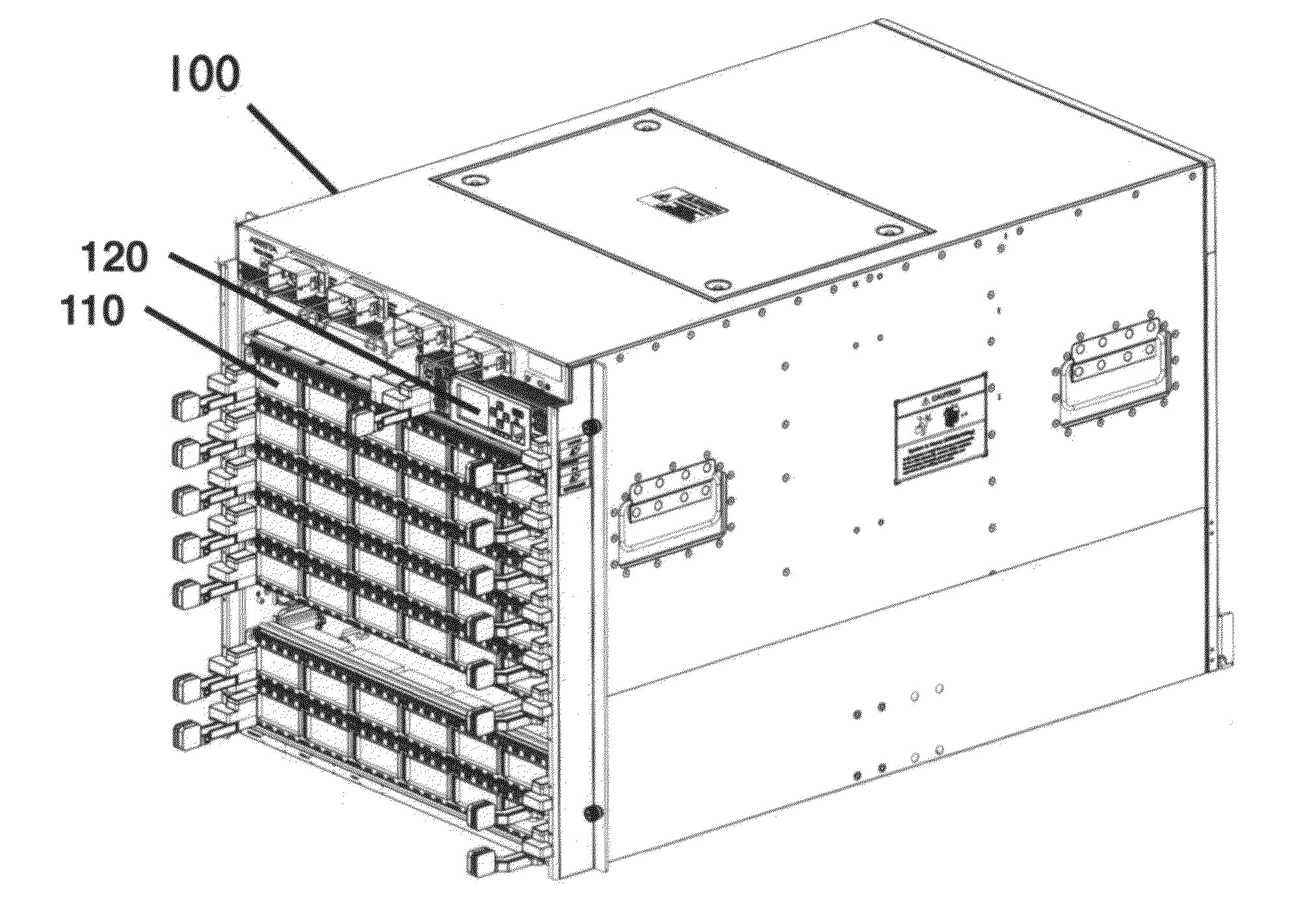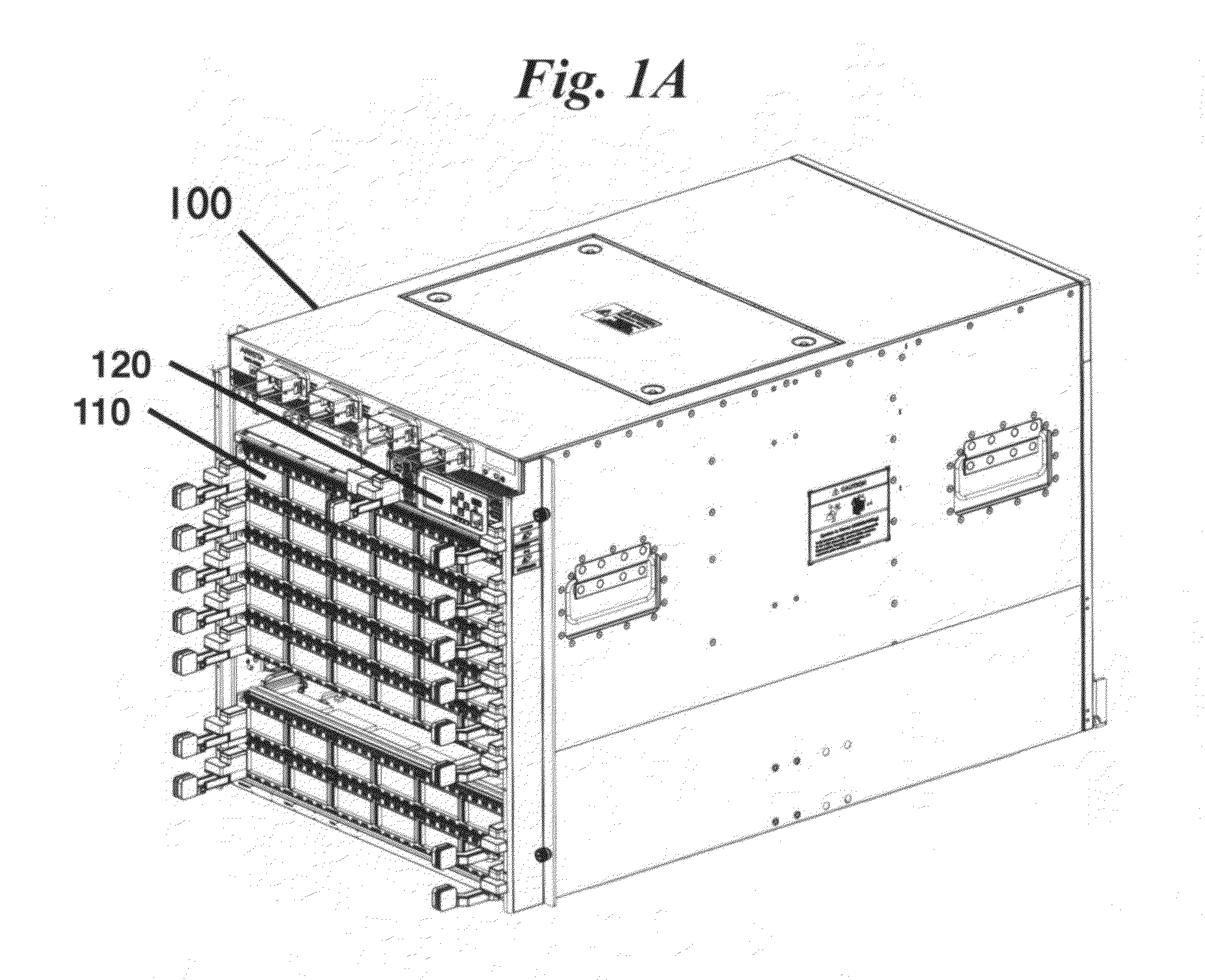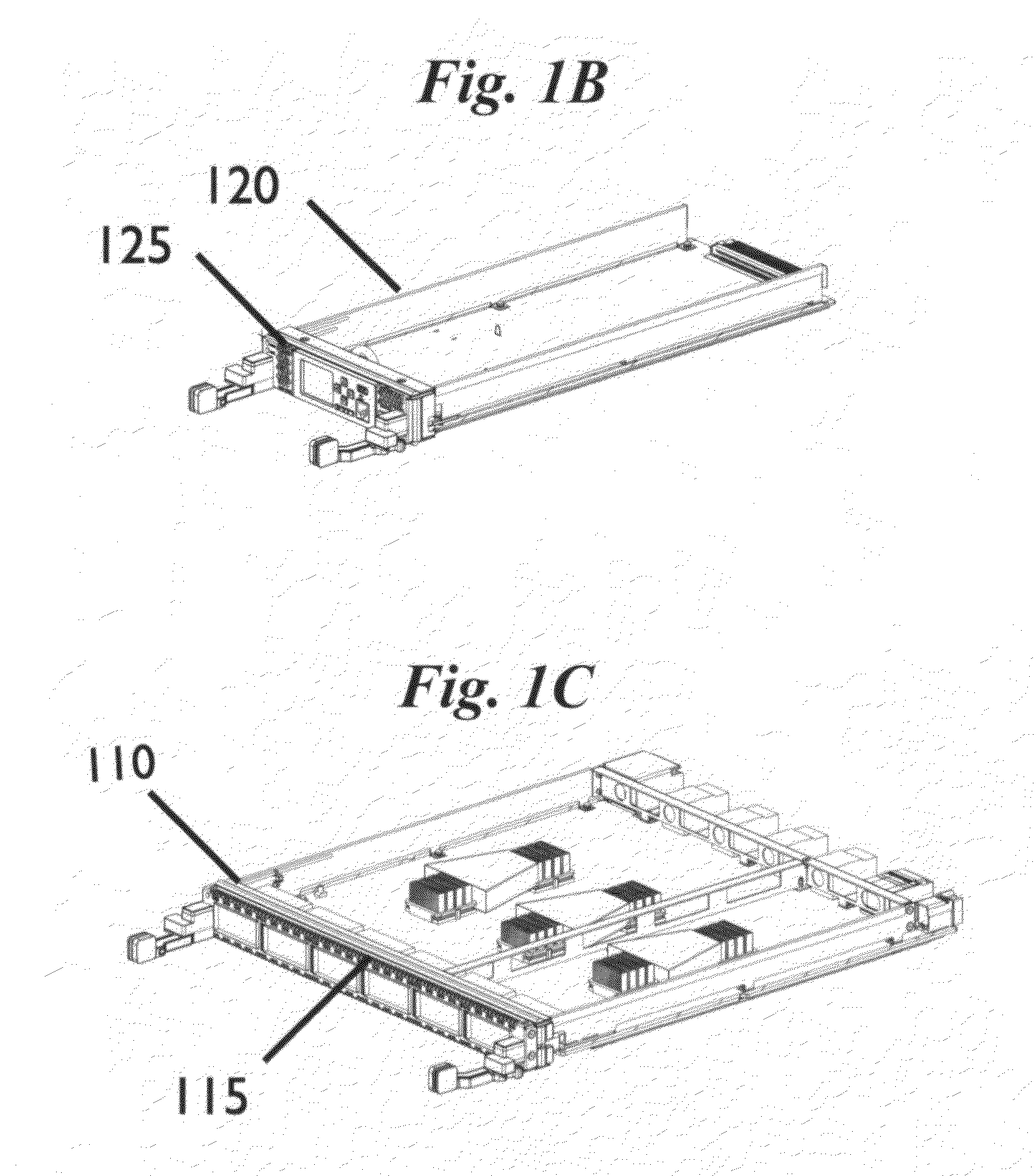Air cooling architecture for network switch chassis with orthogonal midplane
a network switch and chassis technology, applied in the direction of cooling/ventilation/heating modifications, electrical apparatus casings/cabinets/drawers, instruments, etc., can solve the problems of large foot-print, inconvenient side-to-side chassis airflow, and heat generation and need to be cooled
- Summary
- Abstract
- Description
- Claims
- Application Information
AI Technical Summary
Benefits of technology
Problems solved by technology
Method used
Image
Examples
Embodiment Construction
[0017]As used throughout this document, words such as “comprise”, “including” and “having” are intended to set forth certain items, steps, elements or aspects of something in an open-ended fashion. Unless a specific statement is made to the contrary, these words do not indicate a closed-end list to which additional things cannot be added.
[0018]In general, the designations “front”, “rear”, “left” and “right” are used here-in to designate relative positions. These designations should not be construed as absolute positions.
[0019]FIGS. 1A-C and 2A-C show the front and the rear views, respectively, of a network chassis 100 configured in accordance with an embodiment of the invention. As shown in FIG. 1A, the network chassis 1.00 includes a first array of parallel circuit boards 110 (FIG. 1C) plugged into a front surface of chassis 100 and, as shown in FIG. 2A, the network chassis includes a second array of parallel circuit boards 210 (FIG. 2B) plugged into the rear surface of the chassis...
PUM
 Login to View More
Login to View More Abstract
Description
Claims
Application Information
 Login to View More
Login to View More - R&D
- Intellectual Property
- Life Sciences
- Materials
- Tech Scout
- Unparalleled Data Quality
- Higher Quality Content
- 60% Fewer Hallucinations
Browse by: Latest US Patents, China's latest patents, Technical Efficacy Thesaurus, Application Domain, Technology Topic, Popular Technical Reports.
© 2025 PatSnap. All rights reserved.Legal|Privacy policy|Modern Slavery Act Transparency Statement|Sitemap|About US| Contact US: help@patsnap.com



